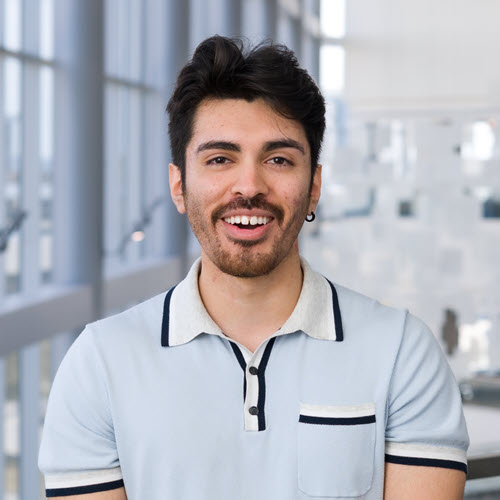Student Profile in Targeting Tryptophan Metabolism in Colorectal Cancer
Roy Garcia
Mechanisms of Disease and Translational Science (MoDTS) Graduate Track
Cancer Biology Graduate Program
Mentor: Maralice Conacci Sorrell, Ph.D.
Undergraduate Degree: Biochemistry and Molecular Biology
Undergraduate Institution: University of California, Santa Barbara
Hometown: Los Angeles, CA
Awards/Fellowships: Graduate: NIH MODTS T32 Training Fellowship; Undergraduate: NIH MARC U*STAR Fellowship
How did you become interested in science and/or research?
I was always a curious child. And so, the early loss of my grandfather to pancreatic cancer left me with many questions. It was scarring to watch such an energetic life become so debilitated; I could not understand why nothing could be done. This experience would plant the seeds that would eventually drive me to study cancer and ways to inhibit its progression.
Please describe your research.
I am identifying novel methods to inhibit tryptophan metabolism in colorectal cancer. By increasing tryptophan metabolism, cancer cells are able to enhance their relative biological fitness by obtaining a metabolome necessary to support their various mutations and driving immune evasion. While numerous tryptophan-targeting studies have displayed significant antitumor potential, there is a lack of successful clinical means to target the pathway. My project aims to uncover potential targets and inhibitors to direct future clinical interventions.
Why did you choose UT Southwestern?
I selected UTSW because it felt the most comforting to me. All the institutions I was considering were conducting great research and had compelling programs. I am sure I could have been successful at any of them; however, I felt like I would thrive at UTSW. Maybe it was the great faculty I spoke to or the sense that there was no limit of resources, but UTSW seemed like the best pick for me.
What do you think makes the Mechanisms of Disease and Translational Science Track one of the best?
I would have to say the near limitless resources and opportunities. I want to have a talk with a leading physician working with patients with my disease state? Easy. I take a 10-minute shuttle ride and walk up a flight of stairs. I need to find a collaborator that specializes in a super niche technique? Of course. I check among the 500+ labs, find that one utilizes the technique I need, and go bribe the post-doc with coffee. No program is perfect, but there is an immediately notable distinction that this program aims to provide any resource you might need.
- Roy Garcia

